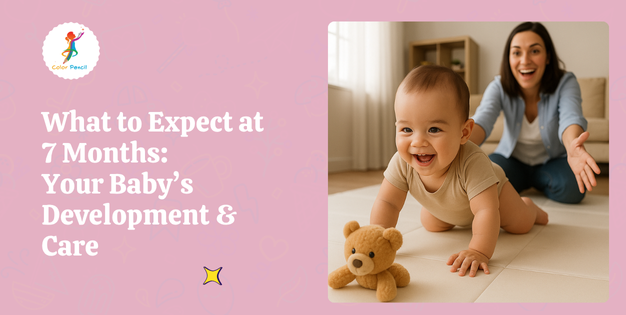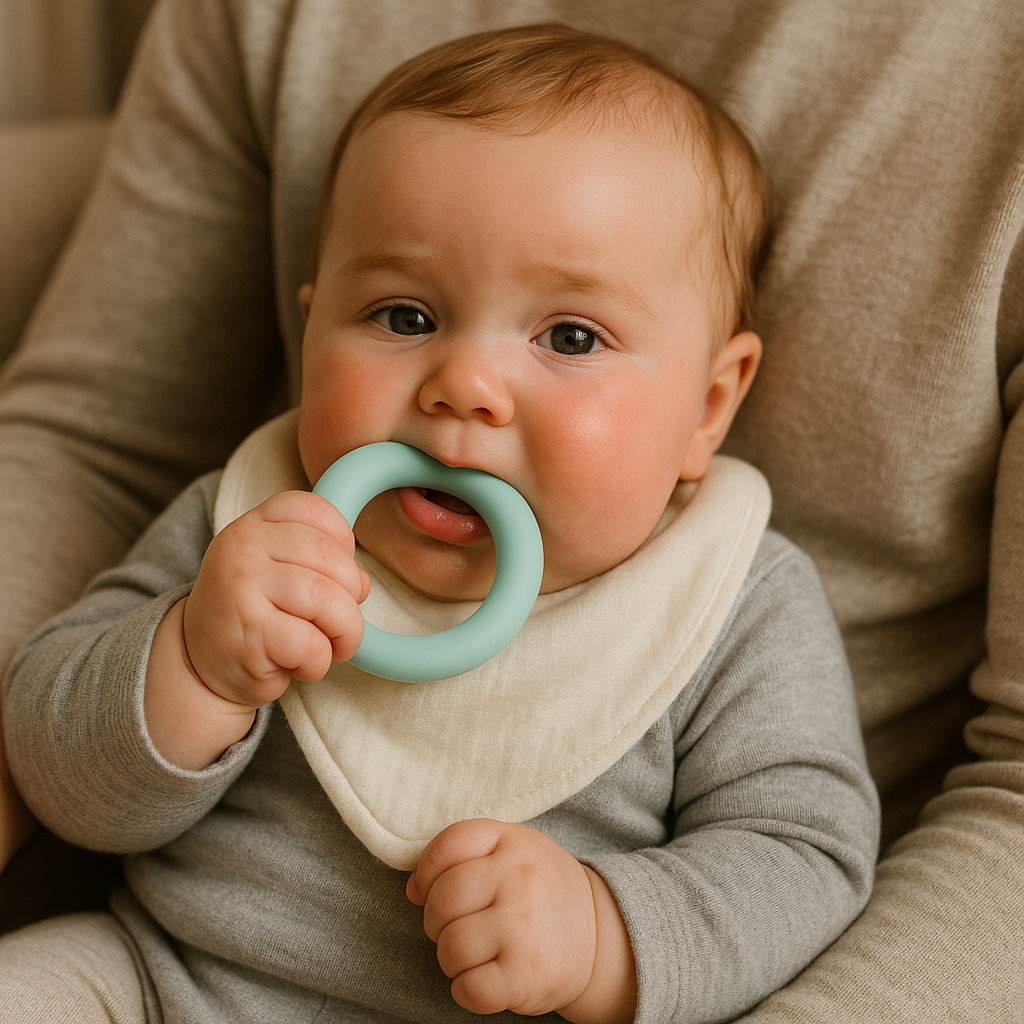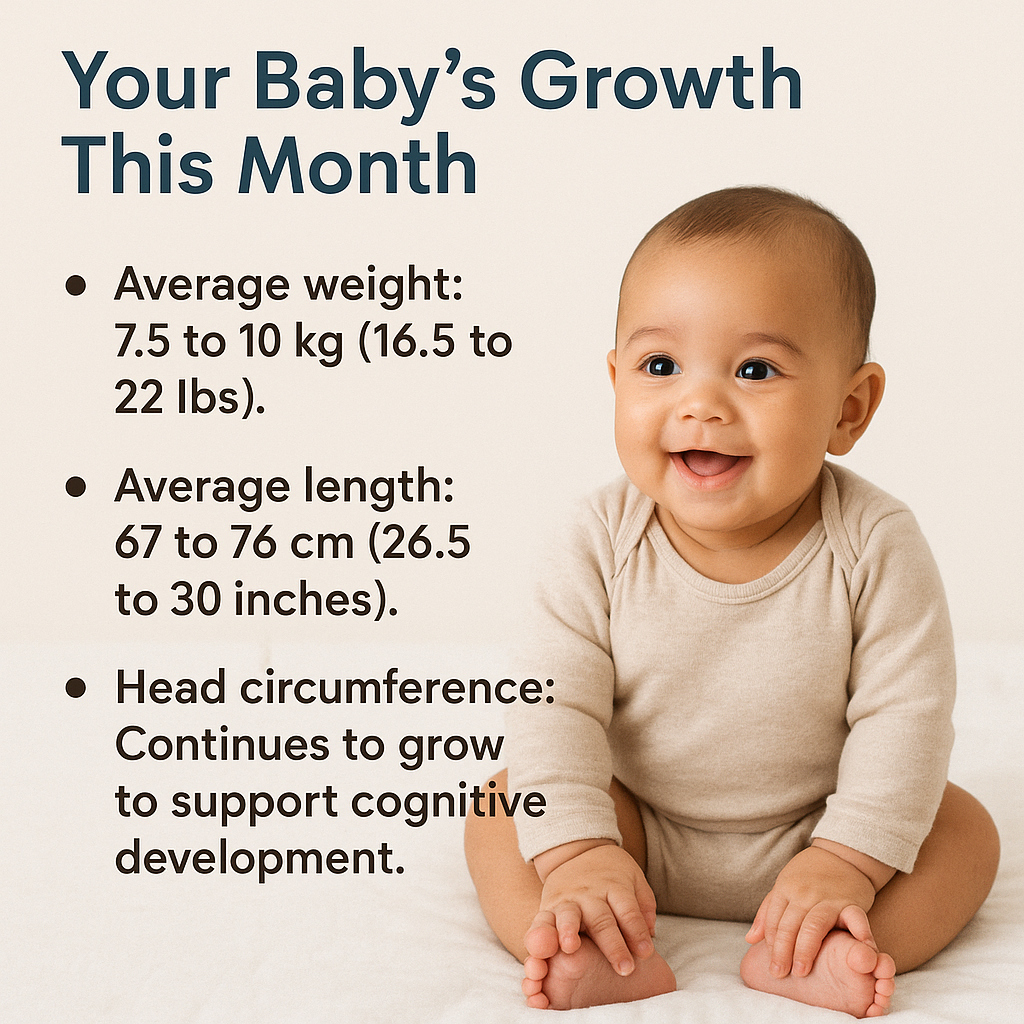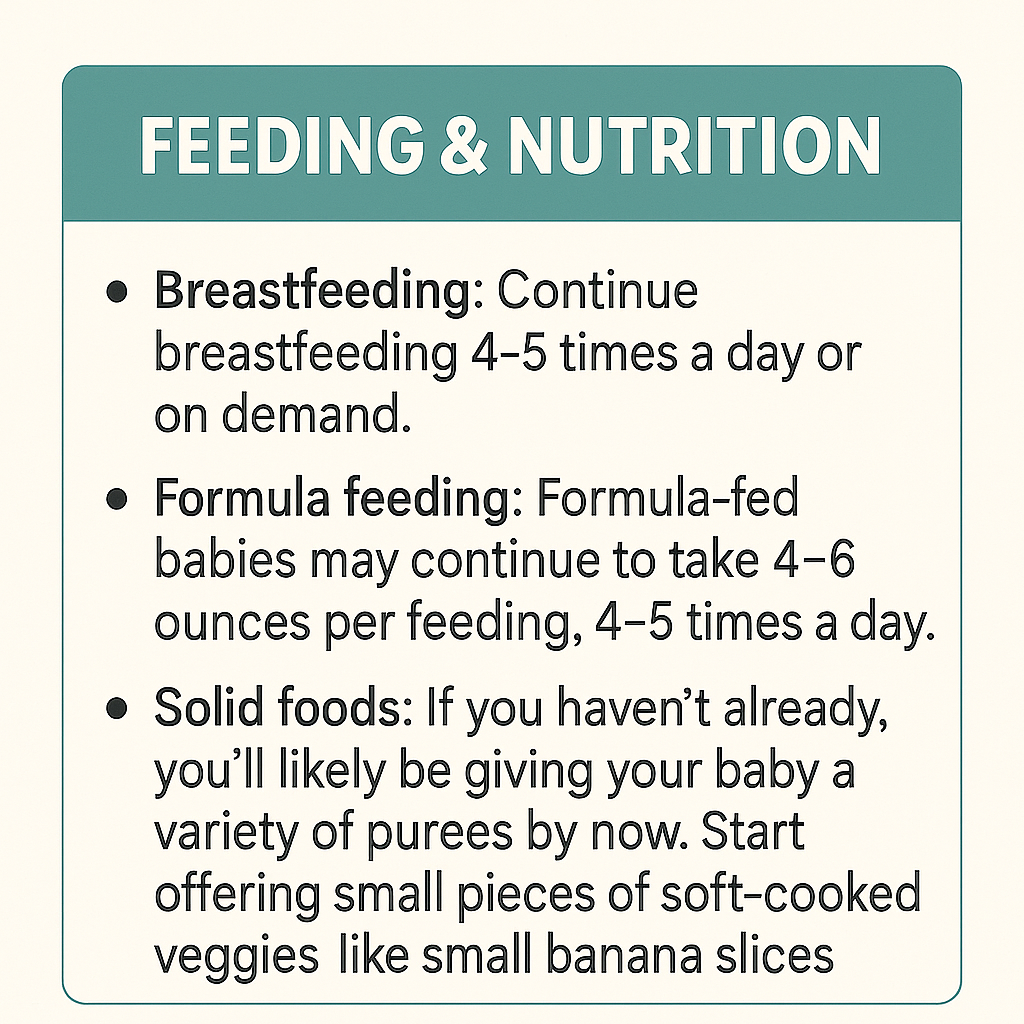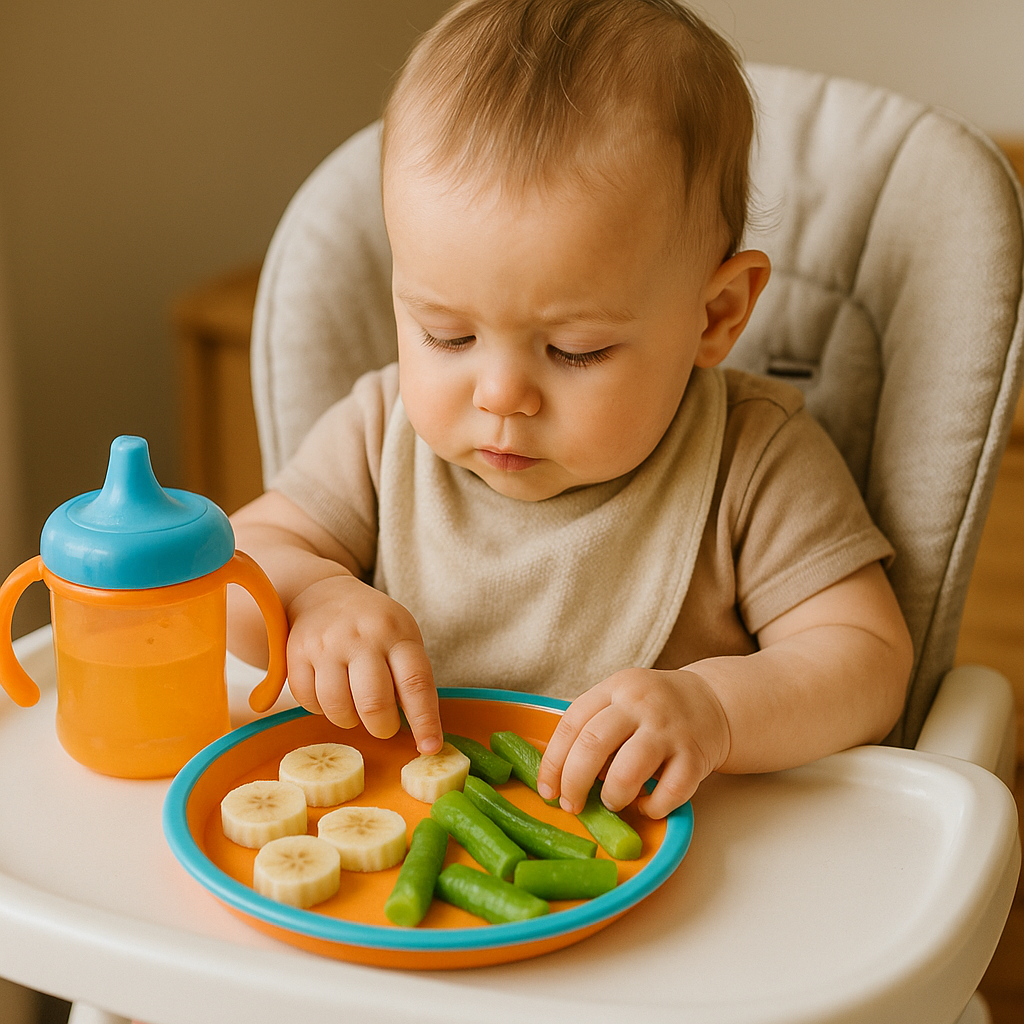Milestones, Growth, Sleep, Feeding, and Practical Tips for the Seventh Month
Your baby is now seven months old, and the changes you’re seeing are incredible. They’re becoming more mobile, developing better fine motor skills, and showing greater personality and preferences. Here’s what you can expect in this busy month of growth and development.
🍼 Your Baby’s Growth This Month
- Average weight: 7.5 to 10 kg (16.5 to 22 lbs).
- Average length: 67 to 76 cm (26.5 to 30 inches).
- Head circumference: Continues to grow to support cognitive development.
Note: Growth patterns can vary, so be sure to track your baby’s development with your pediatrician.
👶 Developmental Milestones
At 7 months, your baby may show:
- Sitting up independently: Many babies are now able to sit on their own without support for longer periods.
- Crawling: Some babies will begin crawling, whether it’s the traditional hands-and-knees crawl, scooting, or even army crawling.
- Improved fine motor skills: Your baby may start picking up smaller objects using their thumb and finger (the “pincer grasp”).
- Babbling more: Expect your baby to be using more sounds like “ba-ba” and “da-da” and attempting to imitate some of the sounds you make.
- Understanding cause and effect: Your baby may start to understand that their actions can produce results, such as shaking a toy to make noise.
🎯 Firsts to Watch For
- Sitting up for extended periods: Your baby might be able to sit without toppling over for longer stretches.
- Crawling or scooting: Your baby may start moving around, whether by crawling, rolling, or scooting on their tummy.
- Pincer grasp: The ability to pick up small objects between their thumb and forefinger.
- Imitating sounds: You might notice your baby attempting to mimic sounds or facial expressions.
- Showing preferences: Your baby might start showing preferences for certain toys or people.
🍽 Feeding & Nutrition
- Breastfeeding: Continue breastfeeding 4-5 times a day or on demand.
- Formula feeding: Formula-fed babies may continue to take 4-6 ounces per feeding, 4-5 times a day.
- Solid foods: If you haven’t already, you’ll likely be giving your baby a variety of purees by now. Start offering small pieces of soft, easy-to-eat finger foods like small banana slices or soft-cooked veggies.
- Monitor diaper output: Expect 4 to 6 wet diapers per day.
🌙 Sleep Patterns
- Total sleep: Around 12 to 15 hours of sleep per day.
- Day naps: Most babies are taking 2 naps a day—one in the morning and another in the afternoon.
- Night sleep: Some babies may now be sleeping for longer stretches, but many still wake for at least one feeding.
- Sleep training: You may want to consider sleep training to help your baby develop a more consistent sleep routine.
Tip: Keep your bedtime routine consistent and calming, with activities like a warm bath, soft music, or a bedtime story.
💉 Vaccines & Health Checks
- 7-month vaccinations: Your pediatrician will let you know if any vaccinations are due at this time, such as a flu shot if it’s flu season.
- Health check-up: This is also the time for your baby’s 7-month health check-up. Discuss any concerns about development, sleep, or feeding with your doctor.
🤒 Common Health Notes
- Teething: By now, your baby may have started cutting teeth, which can cause discomfort, drooling, and chewing on objects.
Increased mobility: As your baby starts crawling or scooting, be sure to baby-proof your home to keep them safe from hazards.
- Frequent falls: As they become more mobile, your baby may topple over while learning to sit or crawl.
🔔 Parental Care Reminders
- Tummy time: Continue encouraging tummy time to strengthen muscles for crawling, sitting, and eventually standing.
- Introduce a variety of textures: Offering a variety of textures in toys and food will help stimulate your baby’s senses.
- Safe exploration: As your baby becomes more mobile, allow them to explore their environment safely and encourage them to engage with their surroundings.
- Self-care: As always, take time to rest when possible, as your baby’s increased mobility may require more of your attention.
Pro Tips for Parents This Month
- Encourage crawling: Give your baby plenty of space to explore by crawling or scooting. Create a safe, soft area for them to practice their new skills.
- Introduce new foods: Continue offering a variety of purees and finger foods, but also look for signs of food allergies and introduce one food at a time.
- Play together: Play with your baby by engaging in games like peek-a-boo, which helps develop their social and cognitive skills.
- Patience with teething: If teething is causing discomfort, offer teething rings or chilled, soft cloths for your baby to chew on.
Final Thoughts
At 7 months, your baby is making leaps and bounds in terms of mobility, social interaction, and cognitive development. This is an exciting time full of milestones like crawling, sitting, and reaching for toys. While the increased activity may bring new challenges, it’s also a time filled with joy as your baby begins to explore their world with increasing independence. Enjoy these moments—your baby is growing so quickly!
Visited 108 times, 1 visit(s) today

